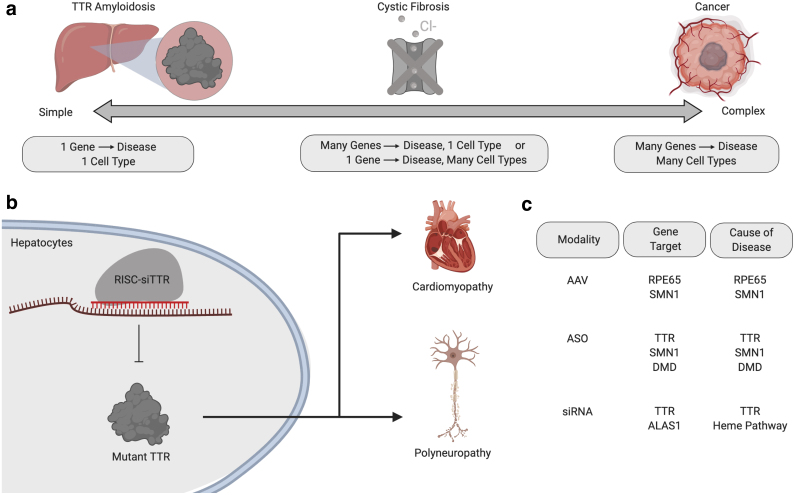Figure 1.
The complexity of a disease influences how likely it is a gene therapy will work. (a) An ideal target for gene therapy is a gene that is solely responsible for disease progression and is expressed primarily in one cell type. However, CF is a disease caused by CFTR affecting multiple cell types and, thus, lies in the middle of this complexity spectrum. (b) An example of an ideal target for gene therapy is TTR amyloidosis, a disease caused by mutant TTR expression in hepatocytes. Thus, siTTR delivered to hepatocytes slows disease progression. (c) Of the seven FDA-approved AAV, ASO, or siRNA gene therapies, only one does not meet the criteria for an ideal gene target: ALAS1 siRNA for acute hepatic porphyria. The other six diseases and the underlying gene targets are RPE65 DNA for Leber's congenital amaurosis, SMN1 DNA, and ASO for spinal muscular atrophy, TTR siRNA and ASO for TTR amyloidosis, and DMD ASO for Duchenne's muscular dystrophy. AAV, adeno-associated virus; ALAS1, aminolevulinic acid synthase 1; ASO, antisense oligonucleotide; CF, cystic fibrosis; CFTR, cystic fibrosis transmembrane conductance regulator; TTR, transthyretin.

